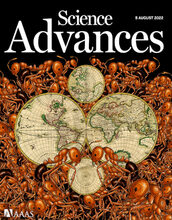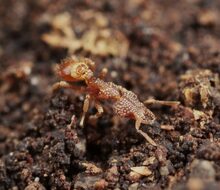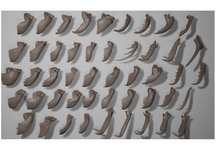生物多様性・複雑性研究ユニット (エヴァン・エコノモ)

生物多様性・複雑性研究ユニット
エヴァン・エコノモ 准教授
economo at oist.jp
研究概要
生物多様性・複雑性研究ユニットは、生物学的多様性がどのような生態学的・進化プロセスを経て創出され維持されるのか?という問題を探究しています。本ユニットでは、どのように種が進化、移動、そして環境に適応するのかという問題に対し、理論・フィールドワーク・実験室的アプローチのすべてを駆使して研究しています。現在は、太平洋諸島におけるアリ群集の動態、アリ全種の世界的な多様性パターン、アリ種の中でも超多様化したオオズアリ属のマクロ進化のプロジェクトに重点を置いています。
For more details and updates, see Economo Lab website.
Research areas
1) Biodiversity theory
Ecological and evolutionary processes often occur in a spatially complex environment, whether it is an archipelago of islands, patches of forest in a fragmented landscape, or a system of streams in a watershed. This spatial structure appears on scales of meters to the sizes and arrangements of continents and interacts with biological processes on all of these scales. Network theory offers a tool for representing the complex patterns of connectivity between ecosystems. Our work is focused on how the structure of these networks interact with biodiversity dynamics, and how their widespread deconstruction by humans may affect biodiversity.
2) Biodiversity and biogeography of Pacific island ants
Ants are among the most ubiquitous and ecologically dominant animal groups. Over millions of years, ant biodiversity has evolved and transmitted across the vast network of Pacific islands. More recently, humans have unintentionally introduced many species from around the globe into the Pacific. We seek to understand the historical and contemporary processes that regulate ant biodiversity over time. Recent work has focused on the Fijian ant fauna, including both a biodiversity inventory, taxonomic revision, and testing biogeographic theory. Ongoing work is focused on applications of population genomic methods to understand the assembly dynamics of ecological communities using new sequencing technologies.
3) Macroevolutionary dynamics of the hyperdiverse ant genus Pheidole
Over evolutionary time lineages evolve in and out of ecological niches, evolve through morphological spaces, and ranges expand and contract in geographic space . These transitions may not be independent, some phenotypes may be better suited to certain ecological habitats, some habitats may promote dispersal and colonization, and colonization of new geographic areas may lead to ecological niche shifts. We have an NSF funded project to examine the joint dynamics of these transitions in the famously diverse ant genus Pheidole, which contains over 1000 described species and is the dominant ant genus in many tropical ecosystems worldwide.
4) High-throughput biodiversity inventory methods and technologies
The discovery and documentation of biodiversity is one of the most basic tasks in Biology. Yet, for many groups (e.g. ants) it requires specialized expertise and arcane taxonomic literature to identify species. We are interested in developing new genetic and computational methodologies for the rapid detection and discovery of biodiversity. In particular, we are working on machine learning techniques for image and video identification of ants.
5) Diversity in complex systems
Biological systems are only one type of complex system where diversity plays an important role. Humans are immersed in worlds of diversity, in the words we speak, the objects we create, the food we eat, and the ideas we think. As in biological systems, this informational diversity evolves and decays as it flows through transmission networks. In collaboration with researchers at the University of Michigan, we are exploring connections between biological and social/economic theories of diversity.
Latest Posts
-
New Paper on Global Ant Diversity
A long-term research goal of our lab is to build a comprehensive database and map of how ants are distributed around the world. We recently published a milestone in this effort, the first high-resolution mapping of richness and rarity. In this study, we compared ant patterns to vertebrates and used machine learning to predict hotspots of undiscovered diversity, which should help guide future research.
Mainland fieldwork tales: of ants, earthquake, and fish cake
Post by Gaurav Agavekar, PhD student: One of the things I like about my PhD work is that I get to do a little bit of everything: fieldwork, molecular lab work, and bioinformatics. This helps keep monotony at bay and supplies a variety of interesting problems to solve. Although I like switching back and forth between these tasks, I probably enjoy fieldwork the most. Unfortunately, due to the pandemic, I haven’t had much of an opportunity to conduct fieldwork outside of Okinawa.
All about mandibles
One of the most striking features of ant diversity is the sheer variety and ingenuity of mandibles. Mandibles are a primary way that ants interact with the world, and are used as diverse tools for many tasks and purposes. Ant mandibles are cutters and carriers, but also trap-jaws, snap-jaws, millipede shavers, seed millers, wood borers, and beyond. There are truly a huge number of mandible shapes and functions to explore from ecological, evolutionary, biomechanical, and developmental perspectives.






